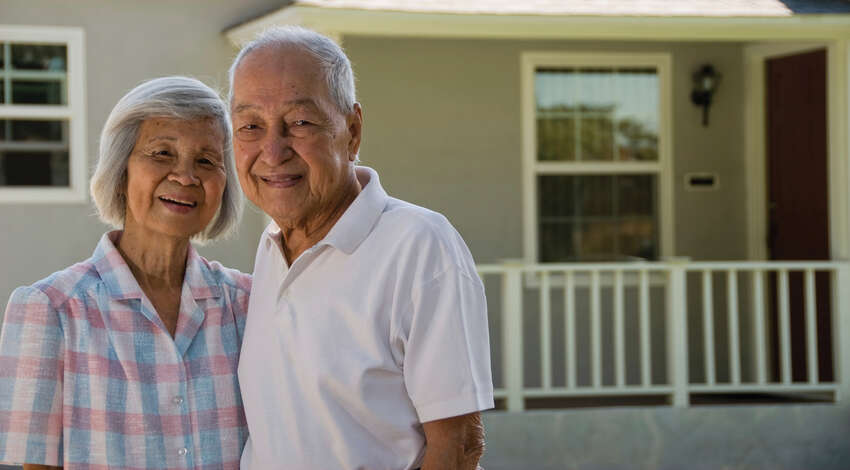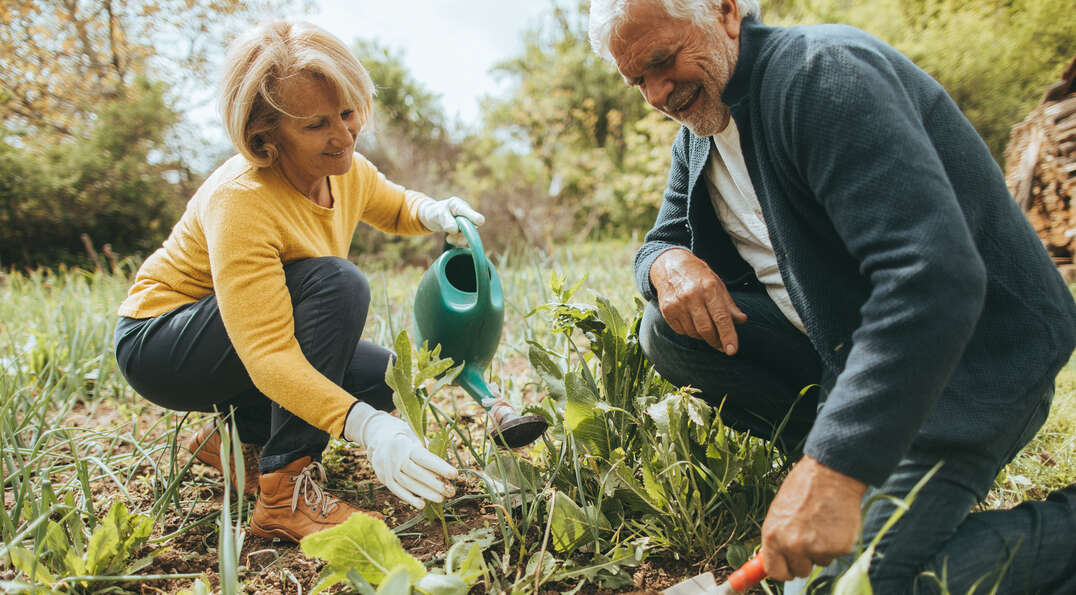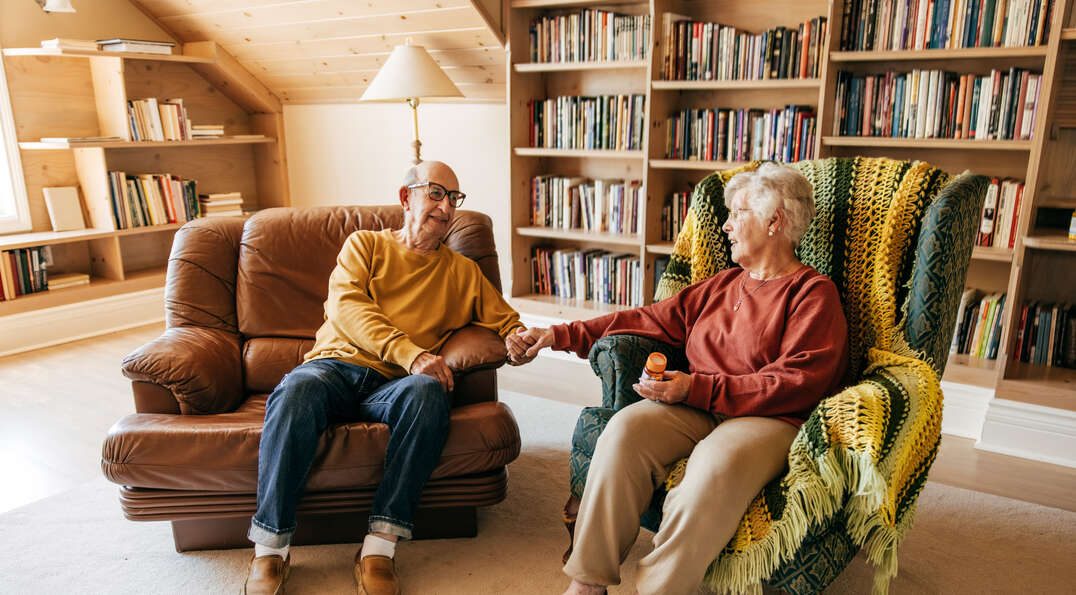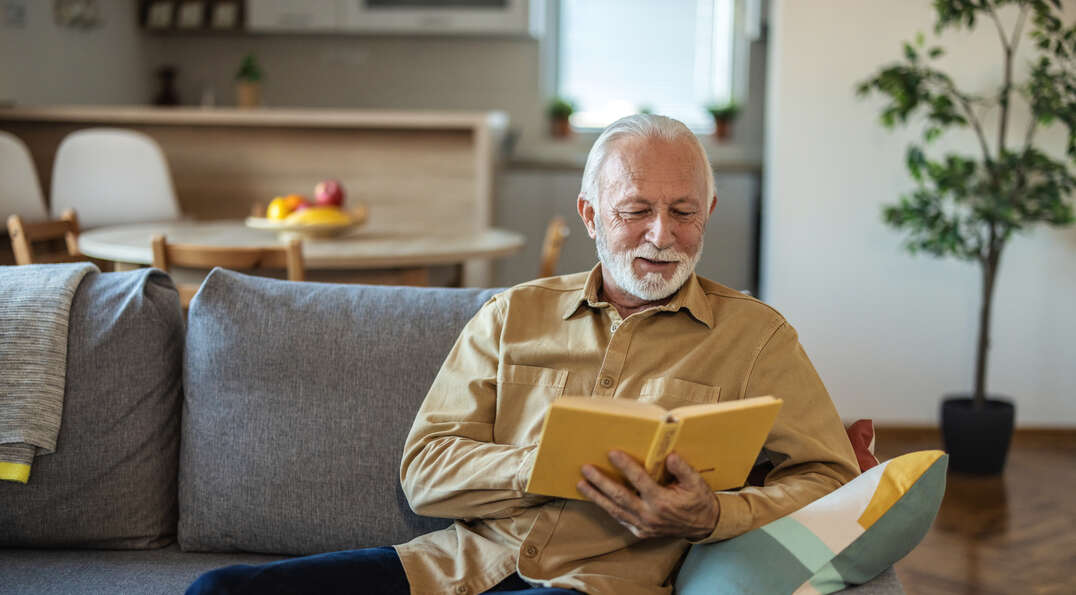Adapting a Home to Age in Place: An Age Well conversation with Lakelyn Eichenberger, Ph.D.
- Adapting homes for physical challenges involves practical modifications in high-risk areas like bathrooms and kitchens, along with thoughtful solutions for stairs and improved lighting throughout the home.
- For individuals experiencing cognitive decline, specific home adjustments such as specialized shower heads, automatic stove shutoffs, and various alarm systems can significantly enhance safety and manage daily challenges.
- Successfully aging in place also relies heavily on a strong support system, encompassing social connections, community resources, professional home care services, and proactive planning for evolving needs.

Lakelyn Eichenberger, Ph.D., is a gerontologist and spokesperson for Home Instead, an organization providing home care services for older people. Based in Omaha, Neb., she is a frequent public speaker and has appeared on programs including the Dr. Oz and Dr. Phil shows. We spoke with Dr. Eichenberger recently about ways people can adapt their homes as they age to make living in them safer and more manageable.
The idea of aging in place — continuing to live independently in one’s own home in later years — is appealing to many people. What do you think drives that?
It is a very popular sentiment. In fact, 90% of people would prefer to age in place at home. I think that correlates very directly to their perceived quality of life and happiness.
Often they’ve lived in their homes for many years. Perhaps they raised their children there. Their home holds a lot of their memories. They also usually feel tied in various ways to their community. They have a local bank and grocery store they always go to. They may be involved in a faith community. They know their neighbors. All of that creates a social support network for them that they rightly want to retain.
I think, too, that staying in one’s home can be important just from an emotional standpoint. It’s a symbol of independence and for some, leaving a home behind feels like admitting defeat.
With that said, many homes aren't necessarily set up for aging in place, so there are some things people need to consider changing in order to stay home. Given the benefits, it's worth thinking about investing a little bit of money into just making sure your living environment is meeting your needs as you get older.
If you’re looking at what you can do to stay in your home longer or help your parents or other family members stay in theirs, it seems like the steps would be quite a bit different for addressing physical issues versus cognitive issues. Can you talk about each of those a bit?
Taking the physical challenges first, I think there are four key areas that people should be thinking about. The first is adapting the home for safety. The second is minimizing the risks. Third is bringing in outside help, and fourth is making a plan which involves all of that.
Begin by taking a look at which areas of the home you use most frequently. Are you experiencing any challenges in those areas? You may want to adopt some safety measures.
Bathrooms and kitchens are where most falls occur. In a bathroom, adding things like grab bars can make a huge difference. Some people get concerned about the resale value of a home outfitted with things like that, but I say safety far outweighs that concern. Besides, the hardware can always be removed, so that’s not something to stress about.
You should also make sure you have a secure mat outside the shower or bath that has a rubber backing to reduce tripping hazards. More significantly, cost-wise, you might consider converting a tub into a step-in shower to get more easily in and out and lessen the risk of slips and falls. It takes some advanced planning, obviously, but it’s an adaptation many people have found essential.
Looking at the kitchen, if arthritis is starting to impact your dexterity and your ability to prepare meals for yourself, there’s a vast array of arthritis-friendly products, from jar grippers to large-handled utensils to reachers. If you have a rug in front of the sink that’s easy to trip over, consider getting one with a rubber backing or using double-sided tape to tape your current one to the floor.
In the living room, do you have a favorite chair that’s getting harder to get in and out of, perhaps because the cushions have sunk in? Maybe it’s time to invest in a new comfortable chair to make watching TV more enjoyable and to improve your mobility.
Small things like that can go a long way toward minimizing risks.

What about stairs, and the reality that many people live in multi-story homes?
Not only do most homes have multiple stories, but many of them don’t have a full bedroom and bathroom on the first floor. That is something to think through. If a person were no longer able to get up and down the stairs, is there a room on the main floor that could be temporarily converted into a bedroom, or would it be possible to build out a full bath if there is currently only a powder room or a half bath?
If navigating stairs is still possible but becoming challenging, at the very least a staircase should be very well lit, with a light switch at the top and the bottom. Perhaps consider installing handrails on both sides for added stability. It can also be helpful to put a piece of colorful duct tape on the edge of the final stair at the bottom, just to provide a visual queue that it’s the end of the staircase.
It would be wise, if climbing stairs is becoming difficult, to avoid carrying armloads of things up and down them — awkward laundry baskets, for instance. Very often, laundry rooms are in the basement or on the main floor while the bedrooms are all upstairs. So a couple of things could be considered here. Most simply, perhaps you switch from a basket to a laundry bag so you’re grasping just one little handle. As a pricier solution, some folks will have a stackable washer/dryer installed in a closet in the master bedroom or a hallway.
There are lifts that you can install in a staircase, whether the staircase is straight or turns a corner. Split-level homes are an interesting challenge, because they’ll often have two or more short stairways. I’ve seen people install multiple lifts in those houses, but obviously that adds expense.
There are several ways to manage issues with stairs, but I want to reemphasize lighting. People underestimate good lighting in places like hallways and stairs, and people of certain generations worry about their electricity bills, so they don’t keep a lot of lights on in the home. I understand where they’re coming from, but the great news is, we have a lot of very efficient light bulbs now, and having that light — especially at dusk and dawn — can prevent a lot of unnecessary falls and accidents.
In addition, a motion-sensor nightlight by your bed can light the way to the bathroom at night, which is a very common time for serious falls.

Can you share some adaptations to help people experiencing cognitive decline?
There’s a lot to consider. One simple bathroom modification would be to install a detachable shower head that allows you to control where the water goes. People with dementia can become agitated when there’s water on their head or face.
Kitchen safety is another source of concern for those living with cognitive impairment. An automatic stove shutoff can be installed that turns burners off after a certain length of time. Instead of having a knife block on the counter, maybe you move all the knives to a drawer just for safety. You should consider securing chemicals — for instance, a bottle of laundry soap could be mistaken for a jug of milk.
Oftentimes, people living with cognitive impairment experience something called late-day agitation, or “sundowning.” Their circadian rhythm is disrupted, they become more agitated in the early evening hours and they sometimes are wakeful during the night at certain points. In those cases, it can be helpful to install a bed alarm underneath the top sheet or on the floor next to the bed to alert family if they’ve gotten up in the middle of the night. That may prevent falls or keep a person from wandering.
If your loved one has wandered, or if you’re concerned that they may, putting alerts or alarms on the doors that lead to the exterior of the house to notify a family member can be helpful. Some phones and other personal emergency-response devices have GPS monitoring, as well.
Aside from cognitive decline, isolation can have a negative impact on mental health too, correct?
Oh, for sure, and that’s why a support network is so important. Who are the friends and family members? A lot of families have kind of dispersed nowadays, so you might not have a direct family member within driving distance, within the same state or even in the same country. If there isn’t family around, it’s important to figure out who you can lean on. Maybe it’s your faith community — many have volunteer programs. Maybe it’s tapping into your Area Agency on Aging. Look into things like senior centers — a lot of area agencies on aging have senior centers or community centers or multigenerational programming that you can get involved in. Do a self-audit of hobbies and activities you enjoy, and how you might do them in a social setting to continue those interactions and connections.
We tend to see that when somebody has to stop driving themself, especially in communities where there's not great public transport, isolation starts to take root. So, if somebody does have to stop driving, it's really important to also come up with a plan on how they’re still going to be able to connect with those that they find enjoyment connecting with or getting to their social activities or to their appointments, because the last thing we want somebody to do is have to give up their keys and then become totally isolated. So, coming up with options and things to look forward to — maybe it’s a monthly or weekly family dinner, or continuing to go to a faith service on the weekend and having a volunteer come pick them up. Those kinds of things are really important to make sure that people aren't isolated, because we know that isolation can lead to a lot of health concerns — physical, mental and emotional. It can even increase the risk for cognitive decline.
What other steps should people consider to improve their ability to stay at home?
Even though there are a lot of tools and conveniences to help you age in place, your own health, strength and mobility obviously impact your ability to stay home. So I think it’s extremely important to stay physically active as you get older in whatever way works for you that has your doctor’s approval. Keeping up your strength and mobility can help you move about your environment better and live in it more safely.
Practically speaking, there comes a point when you just can’t do all the things you once did. So part of aging in place inevitably has to include having help around the house, doesn’t it?
Yes, most of the time. A lot of people think, “Oh, my family will just help out,” and many family members do want to jump in and help. But we’re seeing more adult children in that “sandwich” generation, raising their own kids and helping to look after their older loved one while still working, and that limits the amount of time that they could be there to provide support. I think it’s important again to start thinking ahead about who’s in your support network, and while that can perhaps include family and neighbors that you know, professional support can really be an important supplement.
When you’re talking about professional support in-home, you’re not talking about health-care issues, but more about things like cleaning, cooking, doing chores around the house?
Yes. Home health care is what a lot of people know of as a service that comes into the home, and those folks do more of the medical tasks. Home care is a very complementary service to home health care. To your point, they can help with meal preparation, laundry, running errands and transportation to appointments. Of course, there are also service providers that can help with snow removal, lawn care and other things like that. And especially in more metropolitan areas, delivery services are available from pharmacies and grocery stores.
Sometimes local governments provide services. For example, a lot of local fire stations will come and install fire alarms or will change out the batteries on an annual basis for older adults.
So there are plenty of support options around you that can be helpful in prolonging your ability to stay in your home.

You mentioned fire alarms. On the topic of alarms and sensors generally, what about wearable alarm systems?
They’re abbreviated as PERS, for personal emergency response systems. I think that those are a great option for individuals, especially if they live alone. A lot of older adults don’t want to wear them because they’re not fashionable, or because they’re kind of an outward expression that you’re getting older. But iPhones and iWatches now have fall-detection technology, and so do a lot of other smart watches and fitness monitors. PERS companies, too, are starting to make their devices less conspicuous, looking more like watches than pendants. They really can be lifesaving for many people, often at pretty low cost.
So, with the right combination of products and services and adaptations, aging in place is something that really is achievable for many people.
Yes, and I would also add the other critical piece that I mentioned at the outset — having a plan. I cannot overstate the importance of thinking through, as best you can, when and how your needs are going to change. I have so many examples of people who have done this successfully with the right planning and support, and they experienced high levels of happiness and fulfillment. You can make it work!


